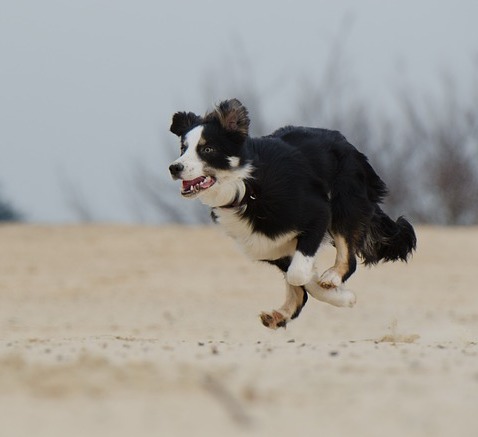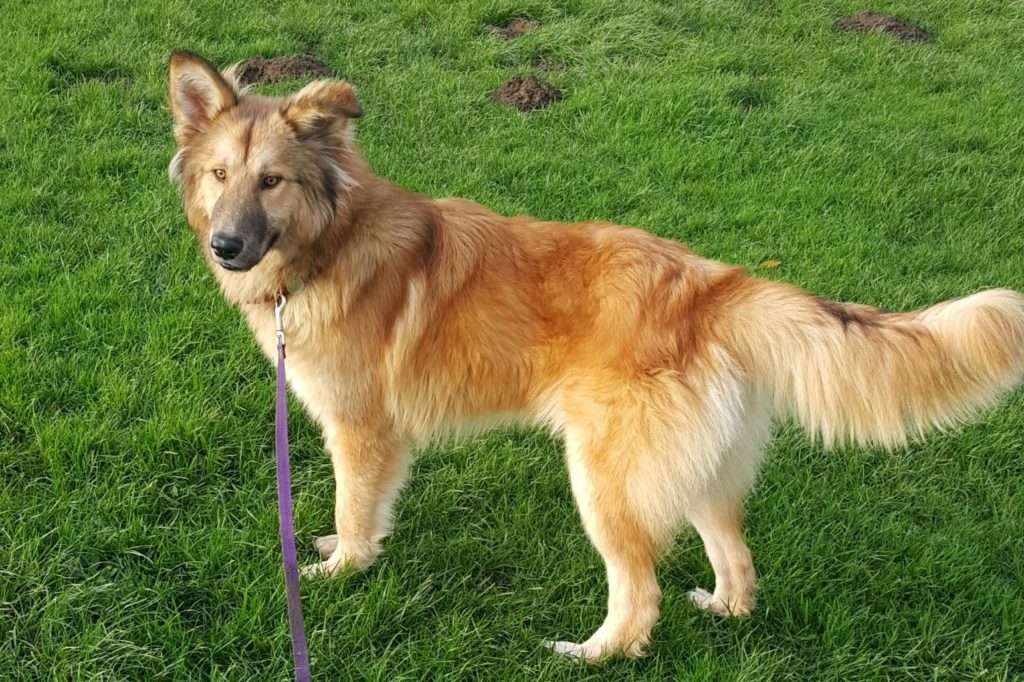
Does your dog regularly disappear at speed to chase ‘things?’
Get a better Understanding & Some Tips Here on
How To Stop Your Dog Chasing.
If your dog disappears in a cloud of dust after a rabbit? Or leaves you standing while he runs off into the distance after a dog, cat, bike, jogger, deer etc etc? You are not alone! Many owners find themselves in the incredibly frustrating position of screaming their recall commands, after a dog that is disappearing from view in hot pursuit of some fast moving thing or object! I get a lot of owners when they contact me say “my dog’s recall is very good until we see a ‘Insert Trigger Object’, then he ignores me” It’s like he goes deaf, but I’m here to tell you this is not a recall problem.
Let me explain. Taking it down to bare roots basics, I know I’m not telling you anything you don’t know when I say, chasing is instinctive behaviour. The difficulty we seem to have with solving this very dangerous problem, is that we approach it from the wrong direction. We assume we need to teach our dogs a reliable recall, which is an option and, in some cases, could provide you with the solution you need, but probably not. Once your dog is chasing something, he is 100% absorbed in the chase, he most likely does not even hear you.
Lets look at it from The DOG’s Point of View:
He LOVES to chase things! He doesn’t just enjoy it…. it chemically affects him physically and psychologically and he feels great when he’s doing it! (Internal Reinforcement) He doesn’t think about doing it, it just happens, in a split second, he’s off and trust me when I say he’s having the best time! Now the only analogy I can come up with to compare this to, so that we may understand the very power we are dealing with here, is to ask you to imagine trying to stop an orgasm once it’s started?… Now I don’t know about you, but I’m thinking if he’s having this internal chemical reaction that is pumping dopamine, adrenalin etc round his system and sending him into doggie orgasm, I could have steak, tuna, even a female dog on heat in my pocket and I don’t think he’s going to listen to me when I give my recall cue word!
It’s just not valuable enough to make him want to stop what he is doing
Chase rabbit = Total Dopamine/Adrenalin Rush
OR
Return to Mum … hmmmmm No Contest!
That is what makes this behaviour one of the most dangerous there is! If we can’t do something about the chasing behaviour, we place our wonderful dogs at serious risk to themselves. They run blind, they will run straight across a road if that’s where the ‘prey’ leads them, they will keep going until they get lost, they can damage limbs, split paws and cause serious injury to themselves and other people.
So I think we agree, for our dogs, chasing is great, they love it, they can’t help but do it, it is almost the best fun a dog can have….
BUT We Have to Stop it…. So What Can We Do About it?

In order to stop your dog from chasing things, it is important to teach him to DO something else instead of chase things, rather than try and STOP him chasing once he’s started (practically impossible). It’s no good waiting for your dog to chase something, then try to train him not to (reactive training), you have to be proactive and teach him before these events happen in order for it to be a strong behavioural response when you need it to be.
5 Tips to Get You Started Being Able to Stop Your Dog Chasing
- Prevent your dog from being able to chase. This is not a recommendation, this is essential. If your dog continues to practise the behaviour, the pleasure he gets from it will continue to make him seek it out at any opportunity. If there are areas on your walks where you regularly come across small furries, get your dog back before you reach this area and put him back on a lead or training line for a short while. If you do see anything, you can then use the opportunity to practise your training under controlled circumstances.
- Repetition & Regularity Increase Successful Responses. Decide which technique you want to use to train your dog not to chase things and practise it every day when you are out on your walks. This behaviour is so powerful you have to continually practise the opposing behaviour you want your dog to do, keeping it very fresh in his mind. If you only practise once a week, chasing will remain the more powerful automatic response in your dog’s decision making process.
- Replace & Satisfy Your Dog’s Chase Desires. It is more powerful and successful (for dogs and humans!) when we teach them to do something in place of whatever it is we want them to stop doing. The brain responds quicker and stronger to a ‘doing’ message (positive) than a ‘stop doing’ message (negative)
- Stay in Control of Your Environment, or In Control of Your Dog. Set up situations & create distractions that you can use to practise your training, but if you are unsure of your environment, keep your dog on a long line so he can remain under your control whilst you are training alternative behaviours.
- Make Sure Your Teaching is Progressive. As with all training, it will be more successful if you start with low value distractions to embed the new behaviour, then build up to the ‘trigger’ ones. You will not be able to teach your dog to stop chasing, while he is chasing something.
Possible Techniques You Can Use
To Prevent Your Dog Chasing
- Leave it Training: So by this I mean you teach a powerful leave response to a cue word, which will prevent your dog chasing in the first place rather than trying to stop him once he’s off and running
- Interactive Training/Play: The more your dog is engaged with you out on walks, the less likely he is to even notice anything to chase. Teach your dog that you are the most fun thing in his world! Lots and Lots of interactive play games.
- Desensitisation to trigger stimulus: Whatever your dog’s preferred ‘chasing’ object, make this object into something so common to him it loses it’s value. For example, I had a dog obsessed with footballs, she would head off at speed if she even heard a football being kicked somewhere nearby. Solution, we bought several footballs to have in the garden, and kicked them around often.
- Redirection: Redirecting the naturally instinctive chase behaviour onto a specific toy used only at walk times. You would need to train this beforehand in low distraction environments and strengthen the behaviour before testing with the trigger thing or object your dog is used to chasing.
- Train an Automated Association Word: Teach your dog a powerful predictive cue word that when he hears it, he automatically responds, because it has been embedded so well during your training that this word predicts great fun. This takes time & repetition but can be the best most successful solution because not only does it cease the chasing behaviour but will also provide your dog with an equally pleasurable ‘chase’ feeling.
All dogs have different natures, and some are much more inclined to chase than others. If you find you are having difficulty overcoming your dog’s strong desire to chase, I highly recommend enlisting the help of a professional trainer or behavourist, one that uses only positive reward based methods. If you would like to be pointed in the right direction of where to find a reputable trainer, please get in touch via our Contact Page Here
Please feel free to share this article with your friends if you think it might help them 🙂
Mattie Parsons
admin